High-quality audio compression has rapidly evolved from research to practical applications, particularly in internet audio delivery, which has significant implications for the music industry. Key applications include digital audio broadcasting, ISDN transmission, archival storage, and internet streaming. The document outlines the fundamentals of perceptual audio coding systems, detailing the processes of audio signal decomposition, perceptual modeling, quantization, and bitstream encoding.
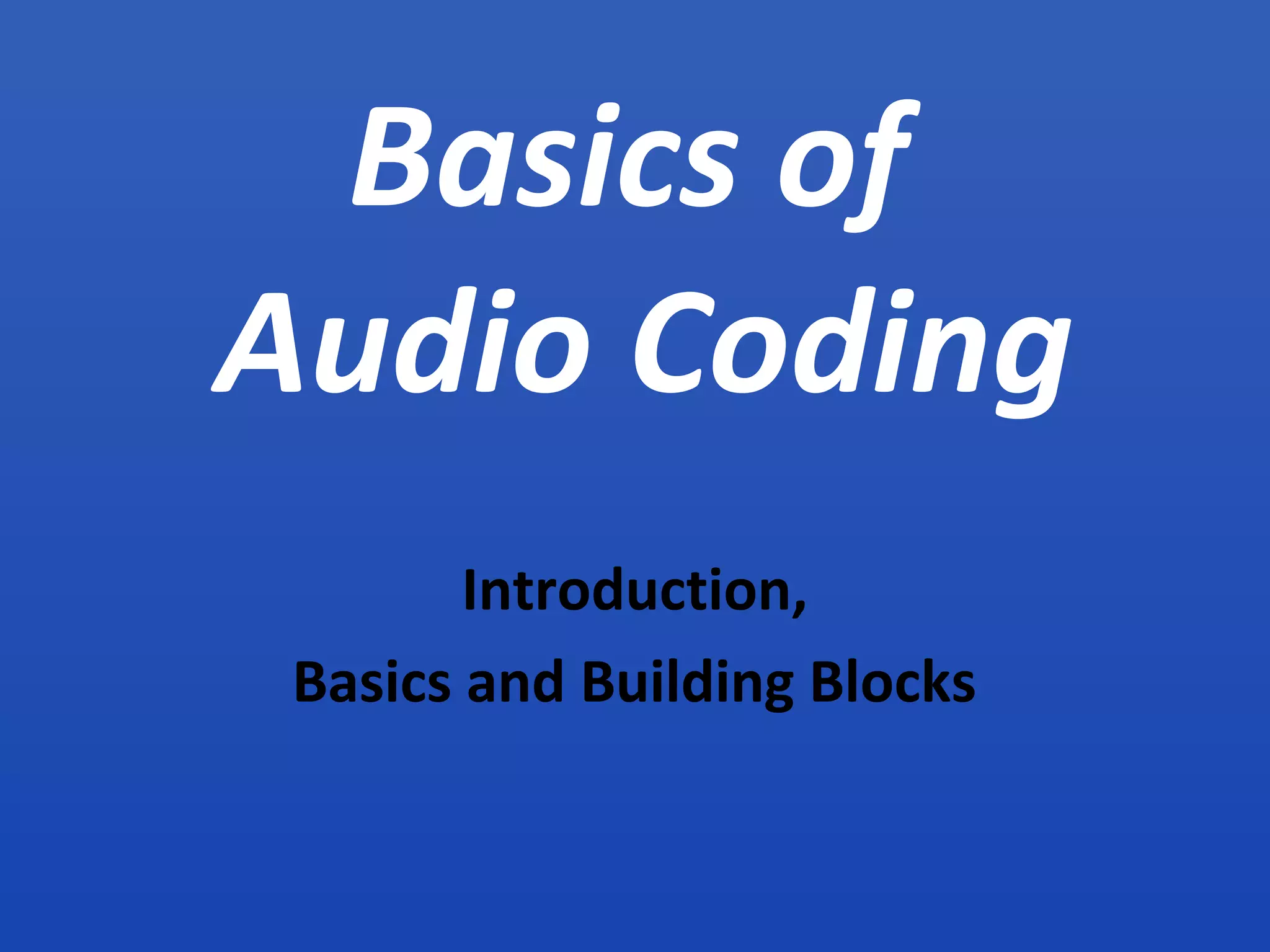
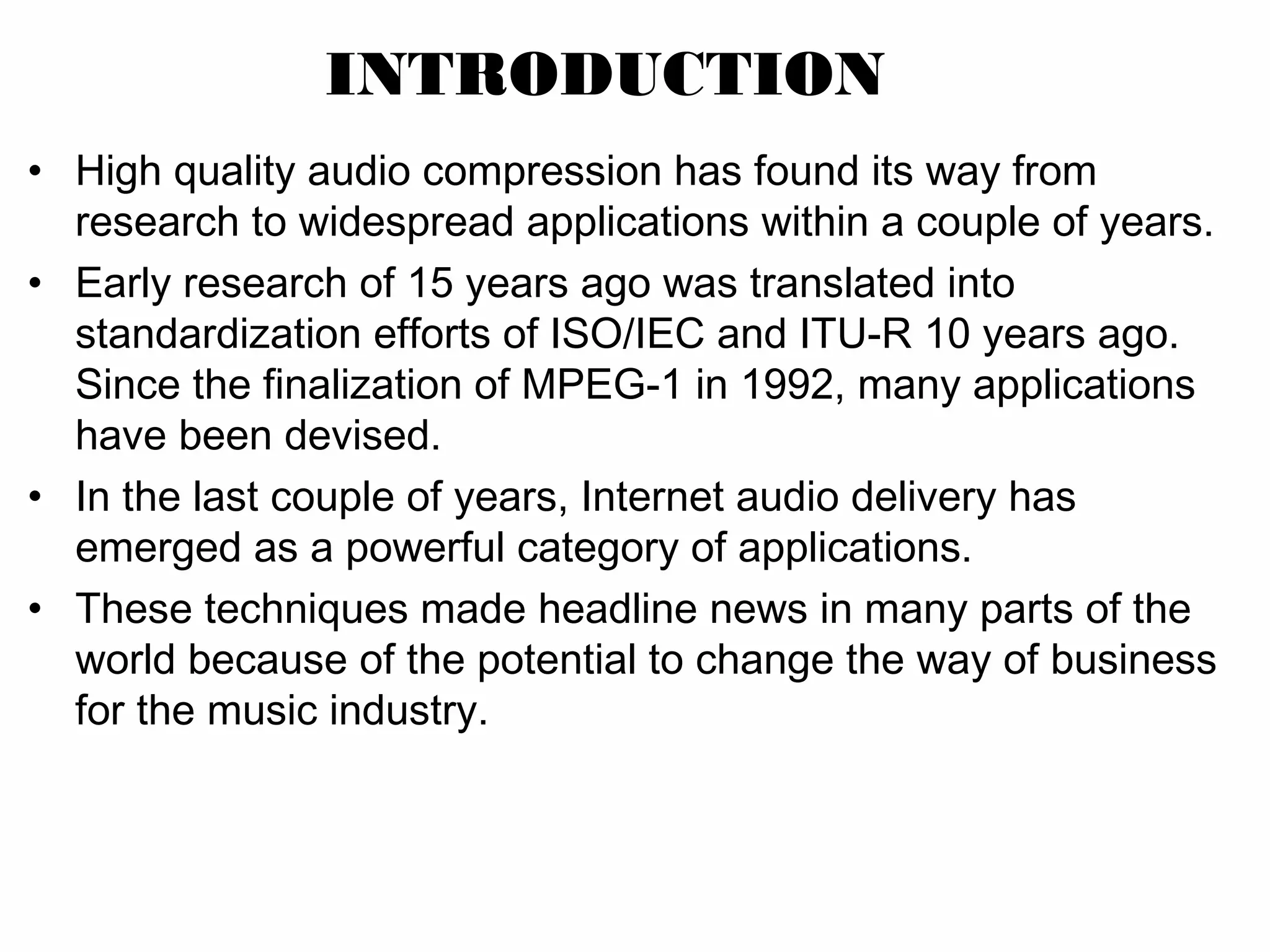
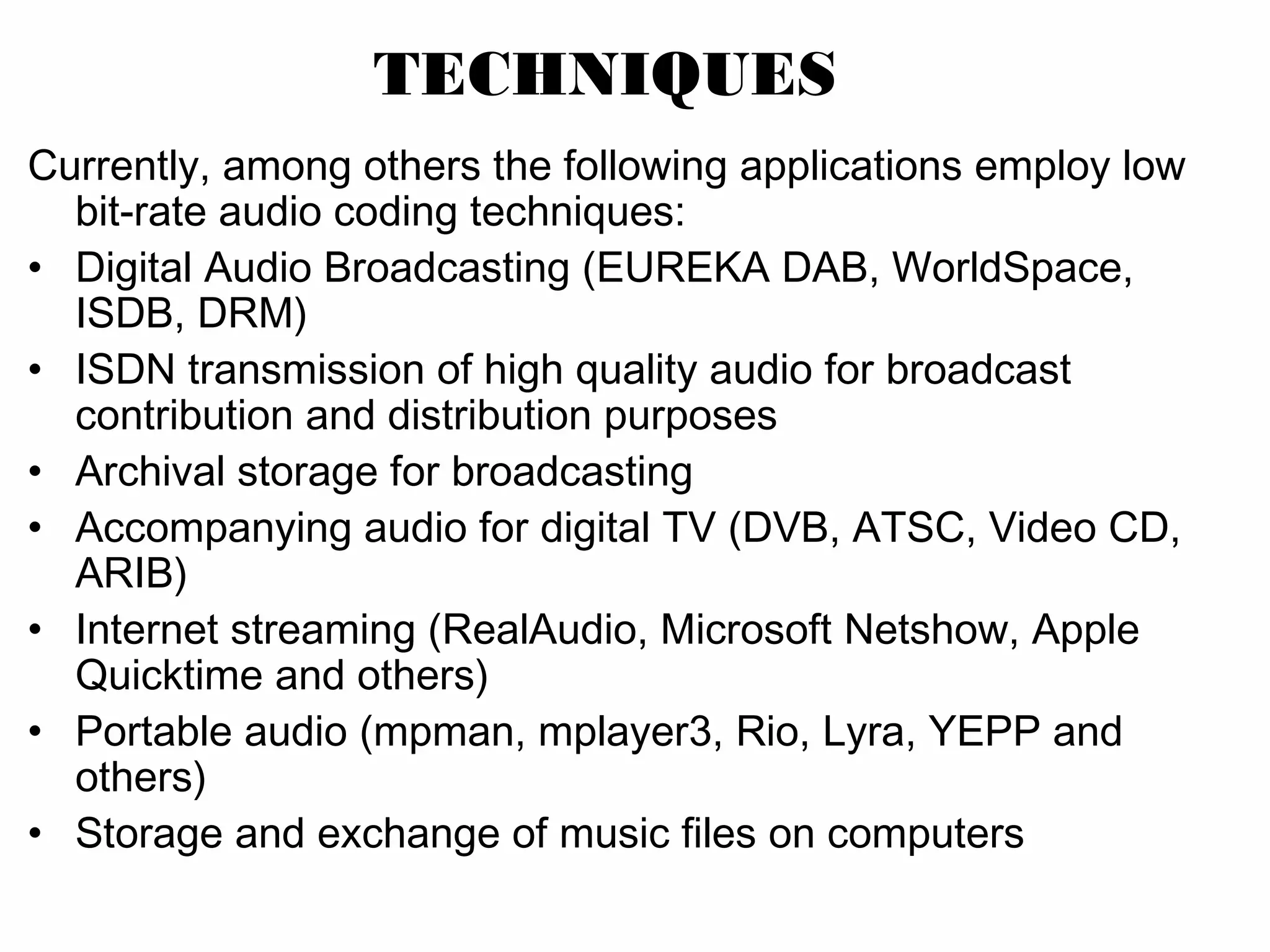
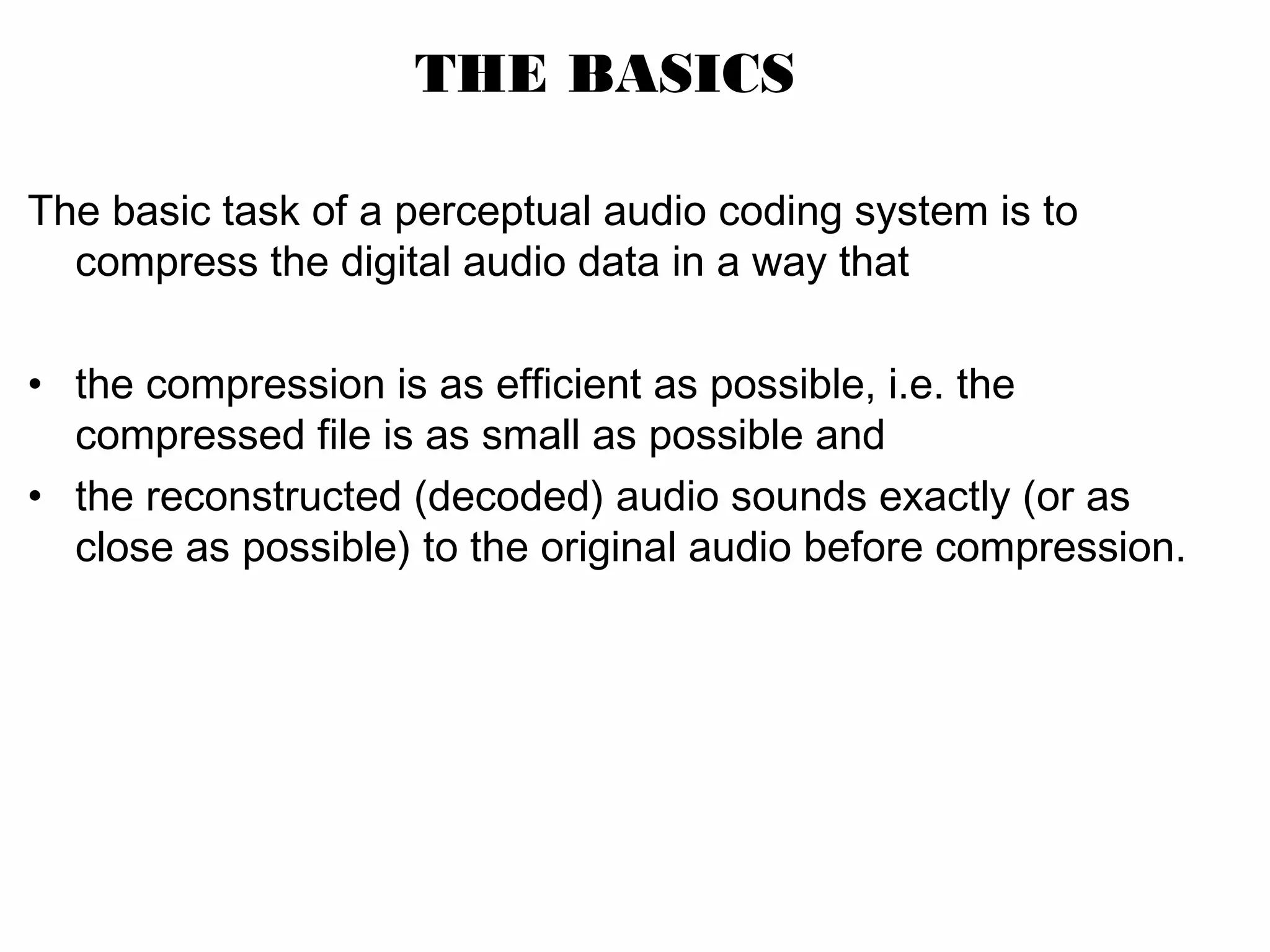
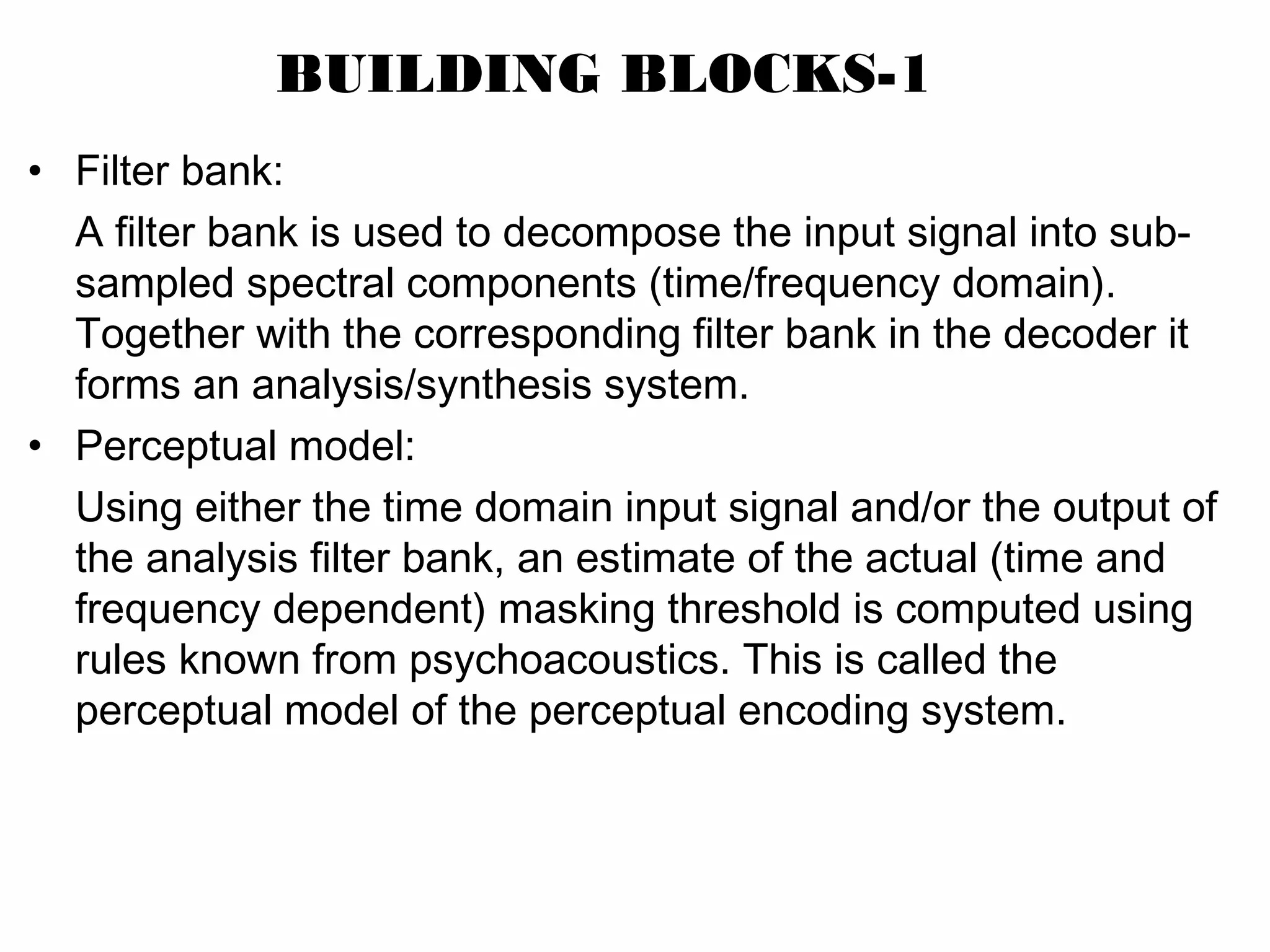
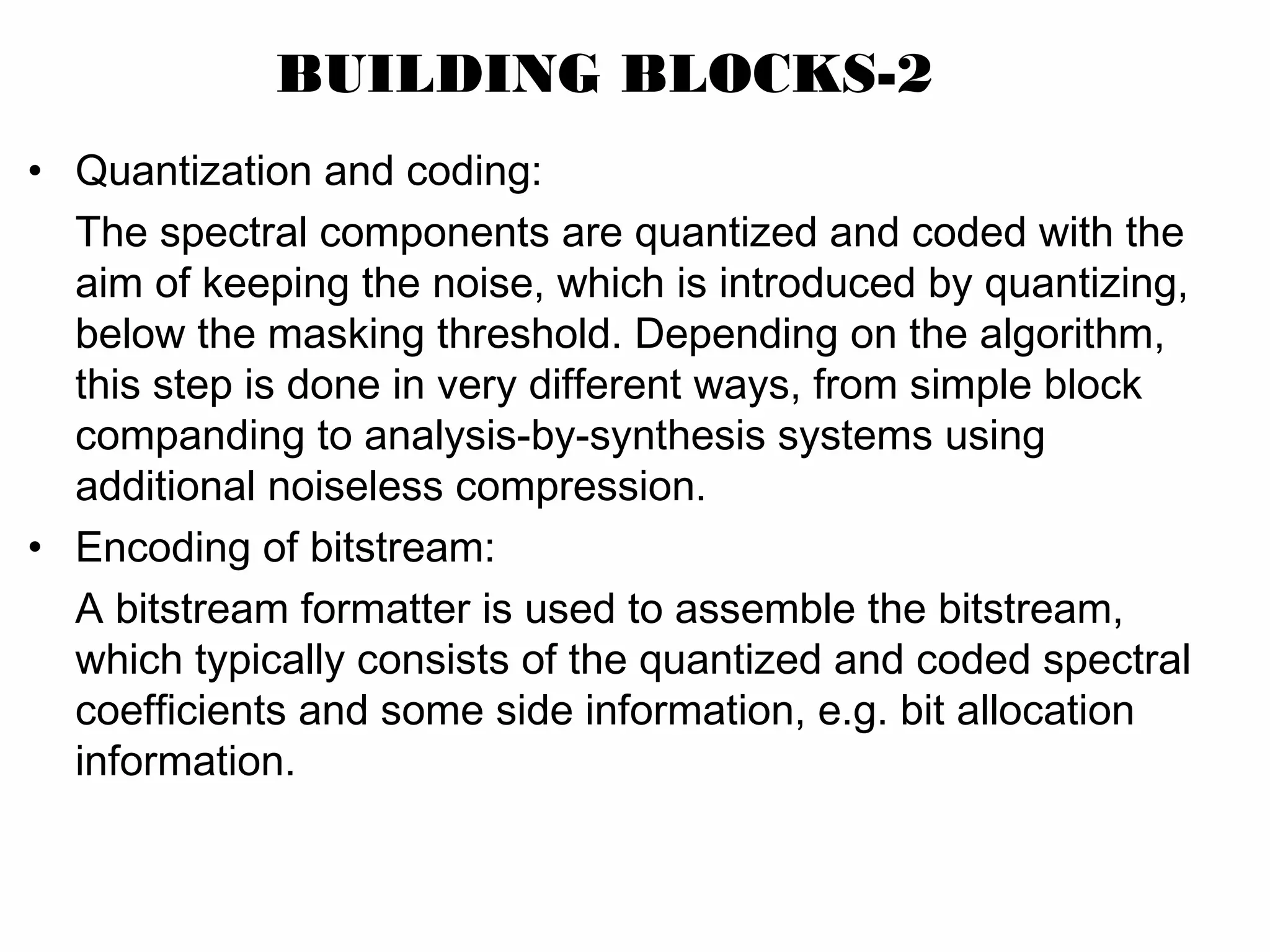
![Learn More in IIT Kharagpur's First Online Certificate Course on Image and Video Communication [Refer: http://goo.gl/hMyYWa ; courses@wiziq.com]](https://image.slidesharecdn.com/basicsofaudiocoding-131217024327-phpapp02/75/Basics-of-audio-coding-7-2048.jpg)